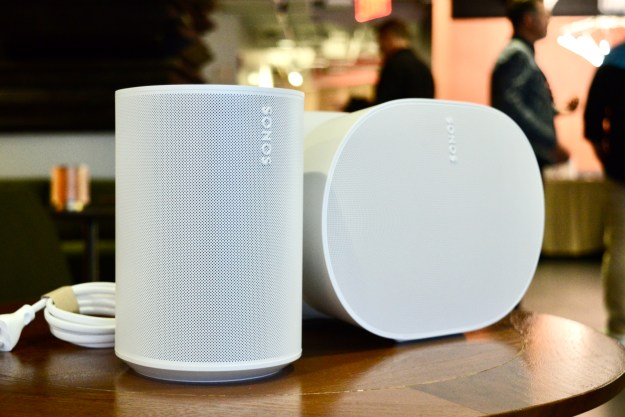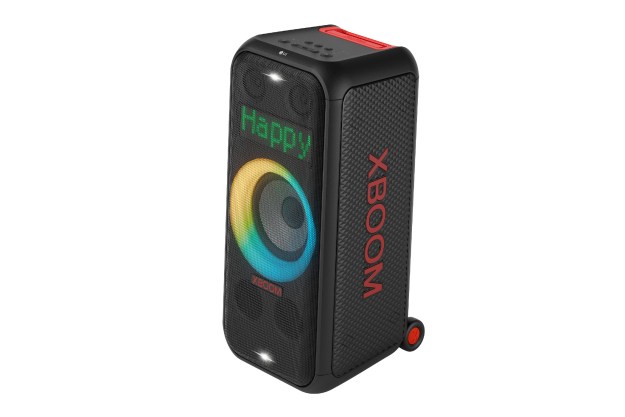Sonos has been around for over a decade and here’s hoping they stick around for several more. Known for its wireless audio applications and seamless mesh networking of its speakers and other peripherals, the company dipped into the home theater market with the release of the Sonos Playbar in 2013. The Playbar features a nine-driver speaker array that delivers a pulse-pounding cinematic experience for living rooms and media caves the world over. Plus, the intuitive Sonos app for iOS and Android devices allows the Playbar to stream music, podcasts, radio stations, and more.
For those who couldn’t accommodate the wide real estate demanded by the Playbar, though, Sonos thought smaller and released the miniature Sonos Beam in 2018. Housing four speaker drivers, a tweeter, and three passive radiators, the small-scale system delivers a sonic presence far greater than its size would lead you to believe.
Even though Sonos no longer sells the Playbar — it has been replaced by the new flagship, the Sonos Arc — you can still find it on Amazon and other retailers, which is a good reason to still consider it as you choose a new speaker. Here, then, our focus is on helping you choose between the Sonos Playbar and Sonos Beam. Both soundbars have their upsides and downsides, but selecting between the two can feel like an impossible choice.
If you aren’t sure which one is right for you, we’ve compared the two to see what the differences are.
Price
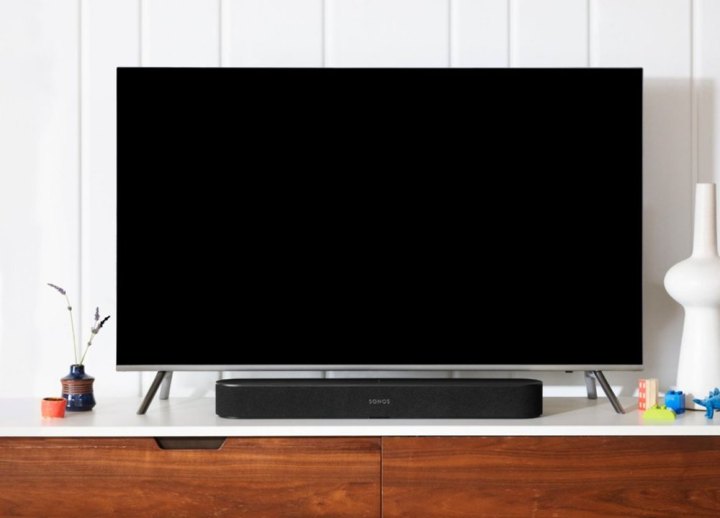
Most of us don’t have the luxury of an unlimited budget, so price certainly matters. As it stands, the Sonos Playbar is incredibly difficult to purchase new, especially from a reputable retailer. Online, you’ll find prices ranging anywhere from $550 to close to $900 on sites like Amazon. You also can purchase refurbished versions of the Playbar through Sonos directly for $600. Compare that to the price of the Sonos Beam, which can still be purchased brand-new for $400. While Amazon still sells the Beam in new condition, the price ($520) is a bit steeper.
Why the massive price difference? At 35 inches wide, the Playbar boasts a total of nine drivers — each with its own dedicated Class-D digital amp — and makes no compromises when it comes to room-filling, cinema-grade sound. The Sonos Beam, on the other hand, strives for a more compact take on the soundbar formula, stretching to just 25 inches wide and with only four drivers and amps.
Even with the Playbar’s reduced price, the Beam is still the most attractive choice for those who are looking to save money. But keep in mind, you can’t expect it to sound as rich or full as its sibling. If your room setup (and your expectations) are a good match for the Sonos Beam, it’s a great choice. But if your room is bigger, you may want to take advantage of the lower price and the extra size and drivers of the Playbar.
Winner: Sonos Beam
Sound

You already know that the Playbar is bigger and has more drivers than the Beam, but what does that actually mean in terms of sound quality? In practice, the Playbar can deliver a wider range of frequencies, at higher volume levels, and with a more effective virtual surround sound. That’s a solid argument in favor of the Playbar for people who put a high priority on getting the best sound for movies and TV.
Both the Playbar and Beam feature Sonos’s speech enhancement software for clearer on-screen dialogue, but the Beam only has a single tweeter to work with, where the Playbar has three. Both can be paired with a Sonos Sub (including the most recent Gen 3 Sub), and a set of Play:1, Sonos One, Sonos One SL, or Ikea’s Symfonisk speakers to create a 5.1 surround sound setup, but the Playbar’s wider design and more effective center-channel drivers make it the clear choice for home theater enthusiasts.
What makes the Playbar better for movies and TV shows also makes it a more accomplished soundbar for music. Dynamic range and volume are both better than with the Beam, and thanks to its wider stance and additional drivers, the Playbar can produce better stereo separation as long as your room is big enough for you to sit at a distance that lets you appreciate it.
All that said, the Playbar is not a total slam-dunk. If hearing every nuance in a high-speed car chase or combat scene isn’t your main concern, and if you’re buying a soundbar for a smaller room, the Beam might still be the better choice. In the right space, it will still provide excellent TV audio, and it’s certainly no slouch in the music department either.
Winner: Sonos Playbar
Voice control
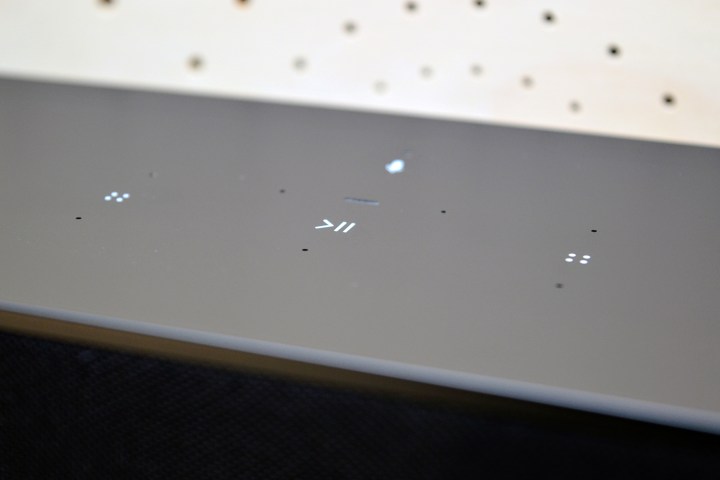
This one is no contest: The Sonos Beam is one of the company’s growing collection of smart speaker products, with the ability to run either Amazon’s Alexa or Google Assistant directly on the speaker. With built-in far-field command mics that can pick out the “Hey Google,” or “Alexa” wake word, even in a noisy environment, the Beam gives you voice control over music playback as well as a host of smart home options. If you happen to own other Sonos components, adding a Beam lets you control those products too.
These voice commands aren’t just limited to audio. If you connect a Sonos Beam via HDMI-CEC to a compatible TV, it will relay instructions like “Alexa, turn on the TV.” The Playbar has no voice control functionality built-in, though it can be controlled by voice if you have a Sonos smart speaker, or another Google Assistant or Alexa device in the house.
Winner: Sonos Beam
Connections
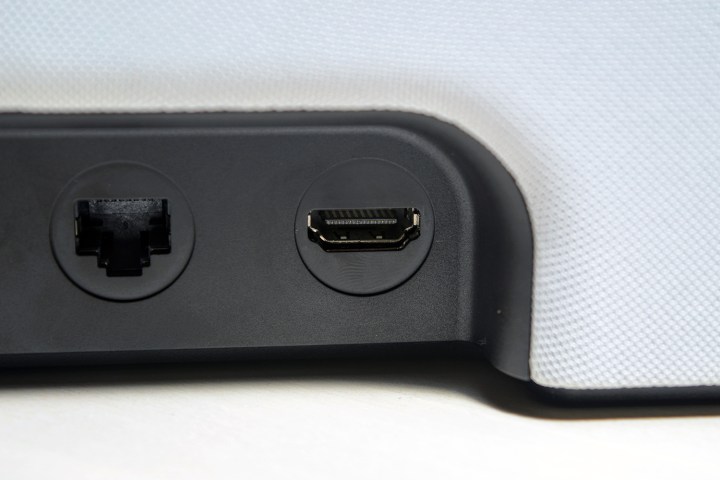
Sonos components are famous for their relative lack of connection ports. By default, most Sonos speakers will have Wi-Fi and Ethernet, and nothing else. Soundbar products like the Sonos Playbar and Sonos Beam are slightly different in that they need to physically connect to a TV. The Playbar uses an optical connection, whereas the Beam uses an HDMI ARC port — by far the preferred choice for most setups — that can be fitted with an included optical adapter if needed.
The Sonos Beam also has AirPlay 2 built-in, a feature it shares with other Sonos products like the Sonos One and Sonos Amp. With AirPlay 2, you can play audio directly to the Beam from compatible (read newer) iOS devices and Mac computers. More than music, you can also send the audio track from a Netflix movie, or any other audio source. If you have other Sonos speakers in your home, the Beam’s AirPlay 2 can be used as a bridge to send that same audio to any speaker in your multiroom audio setup, well, almost any speaker (more on that below).
With an aging optical-only connection and no AirPlay, the Sonos Playbar can’t hope to match the Beam here.
Winner: Sonos Beam
Style and design

This one’s kind of a no-brainer. The Beam’s sleek and modern lines make it much easier on the eyes than the now outdated Playbar, and the fact that the Beam is available in white and black versus the Playbar’s single black and silver finish give it an obvious edge.
The curved edges and slimmer profile of the Beam mean that it’s less likely to distract your eye when watching movies or TV. At just 25.6 inches long, 2.7 inches tall, and 3.9 inches deep, the Beam can tuck under most TVs. Its concave top keeps the LED lights on the controls cleverly below eye line, allowing the Beam to be heard, but not seen.
The bigger and heavier Playbar (35.4-inch long, 3.3-inch tall, and 5.5-inch deep) is much better suited for wall mounting, although its controls are even more unseen, found on the end panel of the Sonos soundbar. One advantage the Playbar may have is that its angled drivers give it the ability to stand flat or upright, while the Beam can only lay in its one position.
However, with its modern design and stealthy profile, it’s hard not to swoon over the Beam’s good looks.
Winner: Sonos Beam
Considerations
Putting aside the one-or-the-other decision-making for a moment, there are a couple of things to consider before making your choice. With the launch of Sonos’s new devices (the aforementioned Arc and Sub, as well as a new Play Five), Sonos has relegated several of its older speakers and devices to “legacy” status, causing quite an uproar among Sonos owners.
Along with updating its Sonos product software to a new version called S2, these legacy devices, such as Zone Players, Sonos Bridge, and Play:5 first-gen speakers, will no longer be compatible with newer devices, including the Playbar and Beam. If you have a legacy Sonos device in your current Sonos setup, just bear in mind that while they will still operate on the older S1 software, they won’t be able to talk to your newer Sonos devices. Here’s a very helpful guide to upgrading to Sonos S2.
Conclusion
At a glance, it seems like the Sonos Beam is the clear winner over the Sonos Playbar in this analysis. It costs less, it has ready-to-use voice control, and the connections are more modern.
But, as you know, it’s never that simple. Both products can provide people with better audio from their TVs. Beam delivers the best sound for compact TVs or listening in smaller or confined spaces. If you use it in the bedroom, you’ll especially be able to take advantage of Beam’s built-in smart soundbar capabilities.
On the other end of the spectrum lies the Sonos Playbar, which supplies surround sound quality power that will fill up even the largest home theaters. What Playbar lacks in high-tech features, it makes up for with greater sound output capacity.
Sonos units are always going to be reliable, high-quality options. Both Beam and Playbar are virtually flawless pieces of sound equipment that you’ll love. If neither is striking your fancy, we may suggest giving the Sonos Playbase a look. Built to house your TV right on top of it, the Playbase delivers striking bass, incredible stereo staging, and easy-to-use controls.
In addition to Sonos-compatible equipment, we have many more recommendations for soundbars that don’t meet Sonos system criteria. For those looking for other top-tier audio products, here’s a list of the best soundbars to peruse if you want alternative non-Sonos sound equipment.
Editors' Recommendations
- Bluetooth on Sonos’ new Era speakers isn’t what you think – it’s better
- What is Sonos? The speakers, app, and everything you need to know about wireless music
- The first Roku-made televisions are now available at Best Buy
- 11 Sonos tips, tricks, and little-known features
- The Sonos Era speakers solve a major problem for Android users



